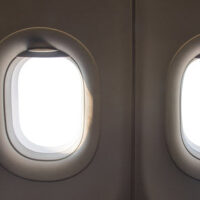Toxic Fumes on Airplanes

In May an international flight traveling from Orlando to the United Kingdom turned around after two crew members and more than a dozen passengers became ill from inhaling toxic fumes that were contaminating the cabin air. This was a Thomson Airways Flight, but similar incidents have occurred on Alaska Airlines, American Airlines and British Airways.
The problem seems to be with the ventilation system, which is used in almost every commercial airliner. Crew members suffering from neurological issues and other health problems have filed products liability lawsuits against airplane maker Boeing Co., alleging that the ventilation system has a design defect.
Faulty Ventilation System?
Manufacturers like Boeing use “bleed air” systems that compress outside air using the jet’s turbine engine and “bleed” it into a manifold to remix with recirculated cabin air. Problems arise if the engine seals begin to leak. Toxic vapors heated engine oils, hydraulic fluids and deicers can then leak into cabin air.
The technicalities might be difficult to understand, but the bottom line is your neurological symptoms could be caused by toxic cabin air, especially if you are a flight attendant or another frequent flyer. (But a passenger could still become sick from a one-time exposure to toxic cabin air). If you begin experiencing vertigo, tremors or memory loss after a flight, or if you become lightheaded or nauseous while on an airplane, seek medical attention and contact an experienced products liability attorney.
Florida Products Liability Law
There are two general theories of products liability: strict products liability and negligence. Strict products liability focuses on the product and negligence focuses on the manufacturer, seller or distributor (in addition to the product).
There are three types of product defects: design defects, manufacturing defects and marketing defects. A design defect is inherent in the design of the product. For example, if a manufacturer intends that a car have three wheels instead of four, that would be an obvious design defect (because the car might not operate safely on only three wheels). A manufacturing defect is an unintended defect. If a car was accidentally manufactured with three wheels instead of four then that is a problem with the manufacture, and not the design, of the product.
A marketing defect indicates a problem with the way the product is sold. For example, if a product does not contain adequate safety warnings or use instructions then that might constitute a marketing defect.
In the “bleed air” ventilation case, there could be a defect in either the manufacture or design of the system. (However, it’s important to note that a different state’s law may apply to products that were not designed or manufactured in Florida.)
Contact Us Today
If you became ill or sustained an injury on an airplane because of a potentially defective product or crew member negligence, contact an Orlando personal injury attorney at The Pendas Law Firm today for a free consultation.
The Pendas Law Firm also represents clients in the Fort Lauderdale, West Palm Beach, Fort Myers, Miami, Jacksonville, Tampa, Daytona Beach and Bradenton areas.
Resource:
bna.com/airsick-flight-crews-n73014461012/






